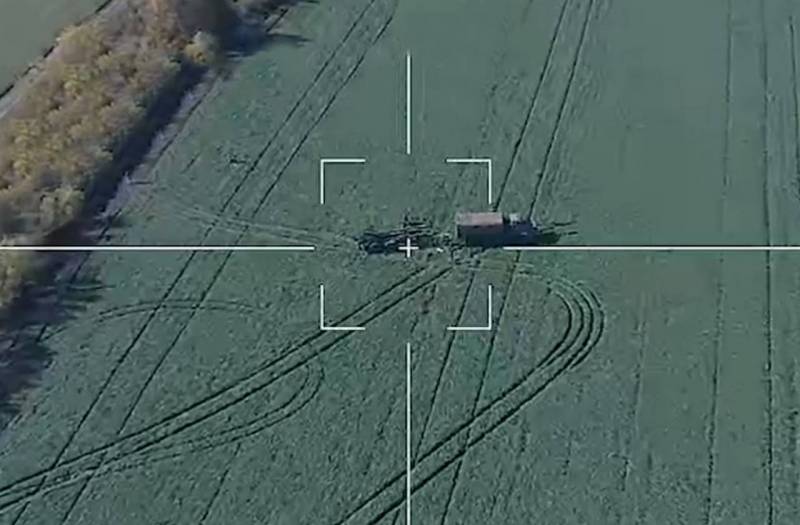How the Samara MGTD family will improve the performance of Russian UAVs and glide bombs
It is reported that testing of a small gas turbine engine (MGTD-22) called “Hummingbird”, developed for promising jet drones, has begun in Samara. Why this news can be considered extremely positive and extremely promising?
As you know, Russia approached the Northern Military District as a catch-up in the field of unmanned aircraft. There seemed to be developments in UAVs of all classes, but some of them to this day remain in the form of single prototypes. The war and the urgent needs of the front for reconnaissance and attack drones of various types spurred the development of the industry, and literally out of nowhere, various design bureaus began to appear - volunteer, garage, field and university. In a short time, many projects arose, including very promising ones, but they all have one Achilles heel - dependence on imported components, Chinese, Iranian or some other.
Samara "birds"
And that’s why the press service of the Samara National Research University named after Academician S.P. Korolev sounded very positive the day before:
Comprehensive testing of the first prototype of the small-sized gas turbine engine MGTD-22 “Hummingbird”, developed at our university and intended for small, but high-speed and load-lifting jet unmanned aerial vehicles, has begun.
The most common engines used in drones today are internal combustion engines, including piston and electric. There are also jet-powered UAVs, but they are considered a relatively rare beast due to their greater complexity and high cost. Against this background, the joint development of the University Engineering Center and the small innovative enterprise “3D Cube”, co-founded by the university itself, which decided to develop a whole family of small-sized gas turbine engines with the widest possible scope for subsequent use, seems very promising.
The first in the Samara “bird house” is MGTD-22 "Hummingbird", whose mass is only 2,1 kg, maximum thrust is 220 N (22,4 kgf), length is 30,6 cm, and diameter is 11,8 cm. For 1 kg of its mass, the engine produces 10 kg of thrust, which is a very good indicator. MGTD-22 has a built-in control system, electric engine start and the ability to remotely restart during flight. The design provides the option of installing an electric generator, which will recharge the battery that powers the UAV electronics. Aviation kerosene is used as fuel for Kolibri.
However, Samarans decided not to limit themselves to just MGTD-22. In parallel, work is underway on larger and more powerful MGTD-40 "Chaika" with a thrust of 400 N (40,8 kgf) and a mass of 4 kg, as well as MGTD-100 "Eagle" with a thrust of 1 thousand H (102 kgf) and a mass of 13 kg. Why is all this very good news?
New unmanned horizons
The emergence in Russia of its own family of small-sized gas turbine engines opens a wide window of opportunity for rapid progress in the field of aviation, unmanned and even manned.
At first, if the MGTD family is launched into mass production, the critical dependence on imported power plants in unmanned aircraft, which crippled, in particular, the Altius heavy reconnaissance and strike UAV project, will be eliminated. As experts note, the gas turbine engine can later be converted into a turboshaft, turbojet or turboprop, which can be installed on drones not only of aircraft, but also of helicopter types.
Secondly, it will be possible to dramatically increase the performance characteristics of drones such as “Geraniums” or “Lancets” that are already available and actively used by Russia. Yes, MGTD are more voracious, but they will allow disposable attack drones to reach much higher speeds, making it difficult for air defense systems to intercept them.
Thirdly, with the advent of mass-produced small-sized gas turbine engines in our country, it will become quite possible to equip gliding bombs with an additional power plant. We will tell you more about such a project told earlier, citing as an example the Israeli gliding bomb SPICE 250 ER (Extended Range, i.e. increased range).
The increase in range was made possible by equipping it with a miniature turbojet engine and a fuel system (JP-8/10 fuel), which allowed the guided aircraft munition to fly from the point of release not 100, but 150 km. In other words, this is already a kind of budget hybrid between a glide bomb and a miniature cruise missile.
We could only dream of something like this, but with the advent of the Samara MGTD family, a lot can change for the better. How great it will be if gliding bombs of 500 kg or 1500 kg caliber radically increase their flight range deep behind enemy lines by installing miniature gas turbine engines!

Information